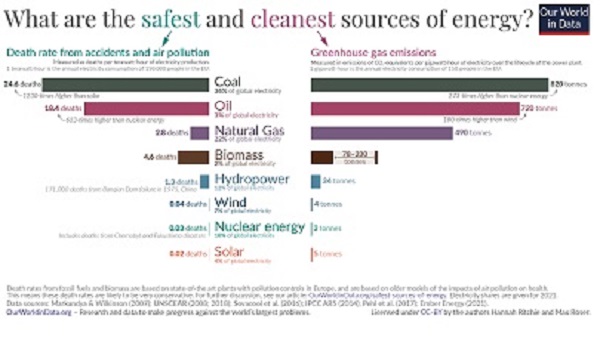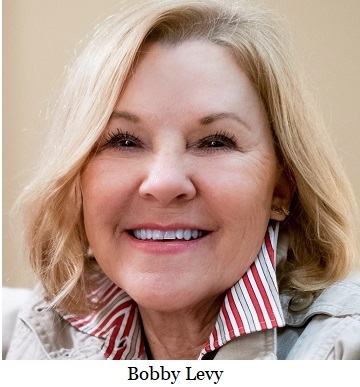Is nuclear the answer for green energy?
Oregonians can’t have their cake and eat it too. They have been persuaded that the climate crisis is real and therefore the legislature has the notion that Oregonians should save the world by over regulating carbon emissions. But when it comes to walking the talk, it seems that Oregonians are tripping and doing face plants in green mud.
HB 2215 received a hearing to answer the green energy shortage with a nuclear option. But the Green New Deal folks turned their backs on the cleanest energy there is. Representative Bobby Levy (R-Echo) testified, “According to the US Department of Energy, nuclear power is the largest source of clean power in the United States. It generates nearly 800 billion kilowatt hours of electricity each year and produces more than half of the nation’s emissions-free electricity. This avoids more than 470 million metric tons of carbon each year, which is the equivalent of removing 100 million cars off the road.†She further states, “nuclear plants can employ up to 700 workers with salaries that are 30% higher than the local average.â€
Currently, Oregon’s Energy Facility Siting Council (EFSC) may issue site certificates for nuclear-fueled thermal power plants, but only after finding that an adequate repository for the disposal of the high-level radioactive waste produced by the plant has been licensed to operate by the appropriate agency of the federal government (ORS 469.595). If an adequate repository exists and is licensed, the nuclear-fueled thermal power plant site certificate proposal must be approved or rejected by Oregon voters at the next available statewide general election (ORS 469.597). House Bill 2215 repeals these provisions by the voters at the next regular general election.
Nuclear power is the key to a clean energy future. Solar panels and windmills alone won’t provide enough energy, and Oregon doesn't recognize hydropower as renewable. According to the Oregon Department of Energy, the Columbia Generating Station in Washington State provides Oregon’s nuclear power and the Bonneville Power Administration markets the electricity it produces.

Representative Shelly Boshart Davis (R-Albany), one of the sponsors of
HB 2215, toured NuScale Power located in the old HP campus on Hwy 20. "They are pioneering clean nuclear power," she states. “I was impressed by the safety of the NuScale design. The design eliminates a Fukushima-type event. They simulated an earthquake while I was there, and they walked me through how quickly the system can recover and rapidly return to power to support first responders such as hospitals, police and fire. The biggest issue renewable energy faces is reliability. Nuclear provides reliability when used alongside other sources of energy.â€
Rep. Boshart Davis testified, “I believe that nuclear power is the key to a clean energy future. Solar panels and windmills alone won’t get us there. And we all know that hydropower is renewable...yet Oregon doesn't recognize it as such. This needs to change.â€
A D V E R T I S E M E N T

A D V E R T I S E M E N T
Peter Bergel testified as co-author and Campaign Director of the 1980 ballot measure 7, which created current law. Bergel contends, “HB 2215 is an attempt to deprive Oregonians of the protection against nuclear waste… seeks to deprive Oregonians of a voice in deciding whether or not to undertake the risks that nuclear power inevitably presents. These include risk of exposure to radiation, risk of catastrophic accident, risk of higher electric bills and risk that money desperately needed to advance safer, cheaper alternatives will be squandered on a moribund technology.â€
Nuclear-fueled thermal power seems to be the best green energy option for the environment with the least amount of emissions. It is not only the cleanest, but the most efficient, reliable, and dependable green energy source. A close second is hydropower because of efficiency and reliability, but even that's been under attack by dam busting pursuits.

Solar and wind energy producing options may have low emissions, but they dirty the environment in other ways and are not reliable or dependable enough to support the demands of our power grid. Not to mention they are made in China. With all the safeguards that have been developed to make nuclear-fueled thermal power withstand natural disasters, where are the green supporters?
A second hearing is scheduled for February 20 at 3PM, room HR C before the House Committee On Climate, Energy, and Environment. Testimony can still be
submitted through February 20.
--Donna Bleiler| Post Date: 2023-02-17 07:53:57 | Last Update: 2023-02-18 14:31:35 |







 Representative Shelly Boshart Davis (R-Albany), one of the sponsors of HB 2215, toured NuScale Power located in the old HP campus on Hwy 20. "They are pioneering clean nuclear power," she states. “I was impressed by the safety of the NuScale design. The design eliminates a Fukushima-type event. They simulated an earthquake while I was there, and they walked me through how quickly the system can recover and rapidly return to power to support first responders such as hospitals, police and fire. The biggest issue renewable energy faces is reliability. Nuclear provides reliability when used alongside other sources of energy.â€
Representative Shelly Boshart Davis (R-Albany), one of the sponsors of HB 2215, toured NuScale Power located in the old HP campus on Hwy 20. "They are pioneering clean nuclear power," she states. “I was impressed by the safety of the NuScale design. The design eliminates a Fukushima-type event. They simulated an earthquake while I was there, and they walked me through how quickly the system can recover and rapidly return to power to support first responders such as hospitals, police and fire. The biggest issue renewable energy faces is reliability. Nuclear provides reliability when used alongside other sources of energy.â€

 Solar and wind energy producing options may have low emissions, but they dirty the environment in other ways and are not reliable or dependable enough to support the demands of our power grid. Not to mention they are made in China. With all the safeguards that have been developed to make nuclear-fueled thermal power withstand natural disasters, where are the green supporters?
Solar and wind energy producing options may have low emissions, but they dirty the environment in other ways and are not reliable or dependable enough to support the demands of our power grid. Not to mention they are made in China. With all the safeguards that have been developed to make nuclear-fueled thermal power withstand natural disasters, where are the green supporters?